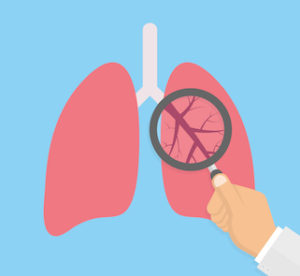 According to the American Cancer Society, lung cancer—both small cell and non-small cell—is the second most common cancer and the leading cause of cancer death in both men and women in the U.S.
According to the American Cancer Society, lung cancer—both small cell and non-small cell—is the second most common cancer and the leading cause of cancer death in both men and women in the U.S.
Since lung cancer is a disease that leaves so much devastation in its wake, it’s important to understand the different aspects of the disease. In honor of Lung Cancer Awareness Month, we have composed this guide on lung cancer made of sources written by our own thoracic specialists to help paint a full picture of the disease and its treatment. In doing so, patients can make informed decisions about their treatment and care.
Although a large portion of lung cancer can be attributed to smoking, there are other causes that people may not consider, such as the ones addressed below. Lung cancer, like many diseases, is complex—knowing the cause and the type of cancer can help us more effectively treat it.
6 Lingering Lung Cancer Myths Debunked
Did you know that lung cancer does not develop only in smokers or older people? In this blog we bust these myths and others, including those about lung cancer causes and treatment.
Get Some Fast Facts About Radon and Lung Cancer
Radon is a naturally occurring gas that forms when radioactive elements—such as uranium, radium and thorium—break down in soil and rock. Radon gas breaks down into solid radioactive elements known as radon progeny. The radon progeny then attaches itself to airborne particles—such as dust—and may be inhaled. Long-term exposure to this over time can damage the DNA in the body’s cells, which can lead to cancer.
It is recommended that people who meet the following criteria (and are considered high risk) should undergo a low-dose computed tomography (LDCT) scan include those over the age of 55 and have a smoking history of at least 30-pack years, among others.
Lung cancer is commonly known as a “silent killer” because it typically doesn’t cause any symptoms until it has gotten to a point where it’s very difficult to treat. That said, there are a few different ways lung cancer is revealed before then that people may not realize, and it may save a life in the process.
An Unexpected Surprise: Incidental Diagnoses of Lung Cancer
Lung cancer typically shows no signs or symptoms until it has reached an advanced stage. In some cases, however, the disease is indirectly found when something else is amiss.
Cancer screening is defined as testing a person who is at risk for a disease, but who does not exhibit signs or symptoms of it. The goal of cancer screening is detection at a stage in which a cure is possible.
For more information about lung cancer or if you’re in need of a second opinion regarding your lung cancer diagnosis, contact the specialists at Thoracic Group today.